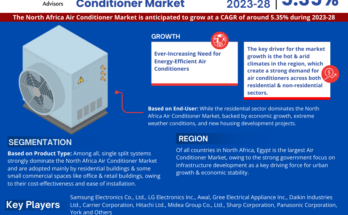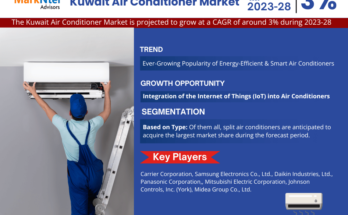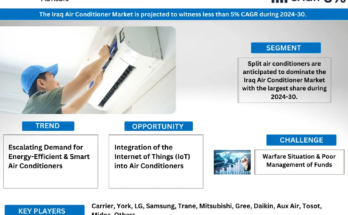According to TechSci Research report, “Methyl Methacrylate Adhesives Market – Global Industry Size, Share, Trends, Competition Forecast & Opportunities, 2028”, the Global Methyl Methacrylate Adhesives Market has valued at USD 1.65 billion in 2022 and is anticipated to project robust growth in the forecast period with a CAGR of 6.69% through 2028.
Technological advancements have played a pivotal role in driving the growth of the global Methyl Methacrylate (MMA) adhesives market. MMA adhesives, known for their exceptional bonding strength, versatility, and durability, have experienced continuous development and innovation, expanding their applications across various industries.
One significant technological advancement is the improvement in formulation and curing processes. Manufacturers have developed MMA adhesives with enhanced curing rates, allowing for faster assembly and reduced production times. These rapid-curing adhesives contribute to increased manufacturing efficiency, reducing overall operational costs.
Moreover, advancements in MMA adhesive formulations have led to improved adhesion properties. These adhesives now exhibit superior bonding capabilities across a wide range of substrates, including metals, plastics, composites, and dissimilar materials. This versatility has made MMA adhesives indispensable in various industries, from automotive manufacturing to construction.
Environmental considerations have also driven technological advancements in MMA adhesives. To align with stringent environmental regulations and reduce their impact on the environment, manufacturers are developing low-VOC (volatile organic compounds) and environmentally friendly formulations. These advancements address health and safety concerns while meeting sustainability goals.
Furthermore, the development of specialized MMA adhesives for specific applications has been transformative. For instance, structural MMA adhesives have gained prominence in the automotive industry for their ability to replace traditional mechanical fasteners, reducing weight and enhancing vehicle performance.
Innovations in packaging and delivery methods have also improved the usability of MMA adhesives. Dual-cartridge dispensing systems and pre-measured packages ensure accurate mixing and application, reducing waste and simplifying the bonding process for users.
Additionally, advancements in adhesion testing and quality control techniques have ensured that MMA adhesives consistently meet the stringent performance requirements of various industries. This reliability is crucial for applications demanding structural integrity and long-term durability.
In conclusion, technological advancements in MMA adhesives have driven the growth of the global market by improving curing processes, enhancing adhesion properties, addressing environmental concerns, and offering specialized solutions for specific applications. As industries continue to demand efficient, versatile, and environmentally friendly bonding solutions, MMA adhesives are poised for continued expansion and adoption across diverse sectors. Their role in modern manufacturing processes and construction projects remains pivotal in the ever-evolving landscape of adhesive technology.
Browse over XX market data Figures spread through XX Pages and an in-depth TOC on the “Global Methyl Methacrylate Adhesives Market” @ https://www.techsciresearch.com/report/global-methyl-methacrylate-adhesives-market/3904.html
The Global Methyl Methacrylate Adhesives Market is segmented into type, substrate end user, regional distribution, and company.
Based on the substrate, the composite segment emerged as the dominant player in the global market for its Methyl Methacrylate Adhesive (MMA). The prevalence is attributed to the increasing demand for MMA adhesives in the bonding of composite components. These composite components encompass a wide range of applications, such as deflectors, bumpers, roofs, composite tanks, blades, car seats, interior body panel structures, and instrument panels in various vehicles, including trucks, cars, rails, buses, and tanks.
The components made from Sheet Molding Compound (SMC) or Fiber-Reinforced Plastic (FRP), such as front and rear end caps, roofs, rear bumpers, floor panels, and luggage door frames in trucks, can be effectively bonded together using MMA adhesives. This dominance of MMA adhesives in composite applications underscores their efficacy and suitability for the specific bonding requirements of these composite materials.
The Asia-Pacific region holds a significant share of the global market and is anticipated to experience substantial growth in the foreseeable future. This growth is primarily driven by the thriving transportation, building, and construction sectors in countries such as China, India, Malaysia, Thailand, and Indonesia.
China, known as the world’s largest automotive producer, has seen a recent decline of approximately 4.16% in vehicle production and a 6% drop in automotive sales, largely due to decreasing demand for traditional diesel and petrol cars. However, the rising popularity of electric cars is expected to prevent a further decline in the automotive market in China.
In contrast, countries like India, Malaysia, and Indonesia have been witnessing remarkable growth in automotive production. These nations have attracted investments aimed at establishing new manufacturing facilities and increasing production capacities within the automotive sector.
The construction industry is also experiencing rapid expansion in countries such as India, Indonesia, Vietnam, Thailand, and Singapore, primarily driven by the increasing demand for residential construction. With a growing population and individuals migrating for job opportunities, the Asia-Pacific region is poised to seize market opportunities in this sector.
Major companies operating in the Global Methyl Methacrylate Adhesives Market are:
- 3M Company
- Henkel
- Permabond
- Huntsman Corporation
- The Dow Chemical Company
- BASF SE
- Kolon Industries
- Akzo Nobel N.V.
- Evonik Industries AG
- Sumitomo Chemical Company Limited
- Saudi Methacrylate Company (SAMAC)
- Lucite International
- Kuraray Group
- Mitsubishi Chemical Corporation
- Asahi Kasei Corporation
Download Free Sample Report @ https://www.techsciresearch.com/sample-report.aspx?cid=3904
Customers can also request for 10% free customization on this report.
“The global Methyl Methacrylate Adhesives market is witnessing substantial growth due to several factors. Methyl Methacrylate (MMA) adhesives are known for their exceptional bonding strength and versatility, making them valuable across various industries.
One significant driver of market growth is the increasing adoption of MMA adhesives in the automotive and construction sectors. These adhesives offer fast curing times, excellent adhesion to diverse substrates, and exceptional durability, which are crucial for applications like structural bonding in vehicle assembly and architectural projects.
Furthermore, MMA adhesives’ resistance to environmental factors, such as temperature extremes and moisture, has expanded their utility in challenging conditions, such as marine and aerospace industries.
Moreover, their ability to bond dissimilar materials, including metals, plastics, and composites, makes them indispensable in modern manufacturing processes. As industries continue to seek efficient and durable bonding solutions, the global MMA adhesives market is expected to maintain its growth trajectory in the coming years.
However, it is important to note that MMA adhesives contain potentially hazardous chemicals, and their safe handling and disposal remain important considerations. Manufacturers are addressing these concerns by developing safer formulations with reduced volatile organic compounds (VOCs) to align with environmental regulations and safety standards,” said Mr. Karan Chechi, Research Director with TechSci Research, a research-based management consulting firm.
“Methyl Methacrylate Adhesives Market- Global Industry Size, Share, Trends, Opportunity, and Forecast, 2018-2028 Segmented by Type (Water Base, Solvent Base, Other), By Substrate (Metal, Plastics, Composites), By End User (Automotive and Transportation, Building and Construction, Marine, Wind Energy, General Assembly, and Others), By Region and competition”, has evaluated the future growth potential of Global Methyl Methacrylate Adhesives Market and provides statistics & information on market size, structure and future market growth. The report intends to provide cutting-edge market intelligence and help decision makers take sound investment decisions. Besides, the report also identifies and analyzes the emerging trends along with essential drivers, challenges, and opportunities in the Global Methyl Methacrylate Adhesives Market.
You may also read:
Electric Vehicle Adhesives Market [2028] – Forecast, Demands, Overview
Textile Binders Market Advancements and Opportunities [2028]
UV Curable Adhesives Market – A Comprehensive Study Report [2028]
UV-Cured Acrylic Adhesive Market [2028] Exploring Growth, Future & Share
Acrylic Polymers and Acrylic Co-Polymers Market [2028] Key Factors and Strategies for Expansion
Table of Content-Methyl Methacrylate Adhesives Market
- Product Overview
1.1. Market Definition
1.2. Scope of the Market
1.2.1. Markets Covered
1.2.2. Years Considered for Study
1.2.3. Key Market Segmentations
- Research Methodology
2.1. Objective of the Study
2.2. Baseline Methodology
2.3. Key Industry Partners
2.4. Major Association and Secondary Applications
2.5. Forecasting Methodology
2.6. Data Triangulation & Validation
2.7. Assumptions and Limitations
- Executive Summary
3.1. Overview of the Market
3.2. Overview of Key Market Segmentations
3.3. Overview of Key Market Players
3.4. Overview of Key Regions/Countries
3.5. Overview of Market Drivers, Challenges, Trends
- Impact of COVID-19 on Global Methyl Methacrylate Adhesives Market
- Voice of Customer
- Global Methyl Methacrylate Adhesives Market Outlook
6.1. Market Size & Forecast
6.1.1. By Value & Volume
6.2. Market Share & Forecast
6.2.1. By Type (Water Base, Solvent Base, Other)
6.2.2. By Substrate (Metal, Plastics, Composites)
6.2.3. By End User (Automotive and Transportation, Building and Construction, Marine, Wind Energy, General Assembly, and Others)
6.2.4. By Region
6.2.5. By Company (2022)
6.3. Market Map
- Asia Pacific Methyl Methacrylate Adhesives Market Outlook
7.1. Market Size & Forecast
7.1.1. By Value & Volume
7.2. Market Share & Forecast
7.2.1. By Type
7.2.2. By Substrate
7.2.3. By End User
7.2.4. By Country
7.3. Asia Pacific: Country Analysis
7.3.1. China Methyl Methacrylate Adhesives Market Outlook
7.3.1.1. Market Size & Forecast
7.3.1.1.1. By Value & Volume
7.3.1.2. Market Share & Forecast
7.3.1.2.1. By Type
7.3.1.2.2. By Substrate
7.3.1.2.3. By End User




